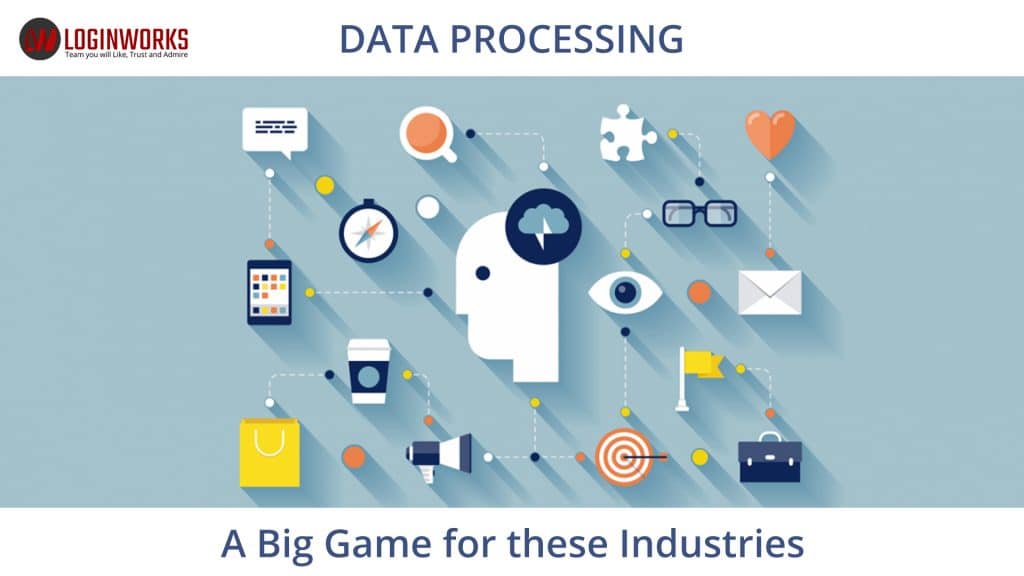Data processing is a fast-developing technology, and has many benefits in the industry through improved efficiencies, targeted marketing, predicting trends, improved safety, and better customer service.
In this article, we will look at a few of the industries that use data processing on a large-scale to provide significant improvements.
Jump to Section
Data Processing in Manufacturing

Large manufacturing processes have the biggest potential gains from effective data processing, such as Advanced Process Control (APC), production refinement, and error tracking. Many large manufacturing industries are installing advanced data processing and analytics to identify exactly where to adjust their processes to improve productivity. Even smaller manufacturing processing can gain big increases in efficiency through data processing.
Data processing methods can streamline manufacturing by identifying specific areas of:
- Production waste
- Product failure points
- Technical and process improvement
- Efficiency improvement
Where no data processing is completed, it’s impossible to determine exactly what contributes to an increase or decrease in yield. With effective tracking of all parameters in the production system, the data can determine exactly what variable is responsible for improving yield, reducing waste, or reducing production times.
How Data Processing Changes Everything
One chemical manufacturer increased yield by 20% and reduced energy output by 15% through identifying and correcting a variability in chemical flow control that directly affected yield. Without data processing, the contributing factor would never have been found. In another case, a raw material processing plant identified that high yield days corresponded to days where there were increased quantities of certain chemicals. This led to the refining of a specific type of extraction process which improved yield to increase net profits by tens of millions.
Data processing effectively matches yield with all possible parameters to determine where the highest and lowest production rates occur, or where losses are occurring, so as to identify the key reasons for the variation. This helps improve efficiency and quality.
Data Processing in Health Care

There are huge amounts of data generated in the healthcare industry. With improvements in data technology, the industry is now using data processing in much more effective ways to improve services, improve pharmaceutical production and effectiveness, and improve diagnostics.
In the fields of diagnostics, large data processing capabilities can help health care providers more accurately match symptoms to causes, and determine if treatments are effective. Electronic health records (EHR) improve patient care by making patients’ full records immediately available to healthcare providers.
Research facilities use complex data processing to improve new medical treatments and find causes for diseases.
Pharmaceutical companies use data processing to improve production to reduce costs of manufacturing drugs. Data processing is also used in studies to determine the effectiveness of drugs.
Healthcare users stand to have huge benefits from streamlined data-processing in medical industries, by more effective and lower-cost care.
Data Processing in Retail

Retail industries are becoming far smarter with effective data processing. This translates into better consumer services.
Strict analysis of buying trends can allow retailers to effectively predict which items are in demand at specific times and match order lead times to cater to this, improving sales and services. The same analysis of remaining stock can help effectively trigger discounts and promotions for items close to expiry, or those with excessive stock remaining. Analysis of data across branches can help immediately identify if any branch is underperforming, and in which areas, to put a timely remedial plan in place.
Specifically targeted marketing can be designed around consumer buying trends. Linking a customer’s shopping cart contents to their profile can identify customer promotions to send out. This may include loyalty bonuses, or new buyer welcomes. It can also target specific promotions. For example, if you are buying more stationery because of new educational demands, retailers may send you promotional coupons for uniforms. If you’ve suddenly increased your clothing purchases for sports, they may send you coupons for healthy foods.
In-depth data processing can create marketing opportunities that keep customers returning more regularly.
Data Processing in the Aviation Industry
The aviation sector has always been at the forefront of technology, since safety and revenue are driven by critical performance improvements, and their early embrace of data processing is no different.
Two key areas of data processing are vital to the aviation industry, safety data, and sales data.
Data processing is used extensively in sales and marketing to optimize seat sales and pricing. Ticketing systems run the complex analysis of seats remaining to prompt specials and promotions, or price increases and decreases with demand. With high costs flight operators rely on seat sales to stay in business, and only with complex data processing can effective yields be obtained.
Safety incident and flight data event monitoring use data processing to provide important safety statistics for improving airline safety standards. Flight data processing indicates key events like unstable approaches or altitude busts. Data processing can link this data into fatigue monitoring programs, airspace use, or crew experience levels to provide preventative strategies. The safety system tracks incidents in all areas of the operation and can identify any significant safety events. For example, tracking a regular pattern in maintenance events on a specific aircraft, go-arounds, or near-misses at a particular airfield.
Data monitoring can also trigger efficiency improvements such as reasons for an increase in delays at specific airfields, fuel efficiencies, and better-rostering practices.
Data Processing in Finance and Insurance
The financial and insurance sectors are another area where data processing has always been an integral part of the business. Increases in data processing technology continue to provide improved accuracy and better customer services.
In finance and insurance, data is used to:
- Assess risks,
- Identify trends,
- Analyze investment performance, and
- Make effective business and pricing decisions.
For investment decisions, only with the effective use of data can a broker decide which companies or stocks are the best choices. Data processing can help solve complex comparisons of different portfolio options and provide concrete results to prove if these choices are working.
In both lending and in insurance, determining risks is important to calculate rates and make decisions. Data processing of claims profiles can help determine which factors affect risk with far more accuracy. It can also help to calculate premiums with more assurance and better tailor packages to customers’ needs.
Complex modeling of customer data can help identify reasons for lending defaults, which will help refine approval processes.
Data Processing in Agriculture
Agricultural data processing is an area that has been slower on the uptake because of traditional techniques and economic influences. However, new research into smart farming has proven significant benefits. Large-scale producers are proving that data use significantly improves yield, and this application is spreading across the industry.
Weather patterns can be used to predict watering and feeding needs to avoid shortages and to plan stock and planting effectively.
Soil and yield analysis can be measured against different planting and watering methods to determine which nutrients are needed, where planting failures occur, and which stocks give the highest yield under which conditions.
Machine sensing and data processing can be used to ensure controlled crop distribution. Geo-mapping can help determine fertilizer requirements. Analysis of environmental sensors can help predict attacks from insects or diseases. Data processing can assist in stock management by tracking breeding processes, managing grazing, and regulating feeding needs. Data processing can drive the use of automation in farming to reduce labor costs.
Far more efficient management of the agricultural business can be obtained from the use of data processing in smart farming processes.
Data Processing in ‘IT’
The information technology sector in some ways is the backbone behind data processing, and in other way, data processing is driving information technology.
Data processing relies on effective IT for data storage, management, and processing. Data management needs programming and digital systems to work effectively, so IT is an integral part of data management.
At the same time, IT professionals are developing more user-friendly data management systems. As data use becomes more widespread, there is a strong need to provide tools for industry professionals to handle data directly. Automated data management systems are becoming a new trend in software development.
Data is also driving IT platforms such as search, social media, electronic shopping, and booking services. There is an increasingly stronger use of data processing in IT businesses with the increasing availability of big data collection and processing tools.
Data Processing in the Manufacturing Industry
In many cases, data processing needs to be outsourced, since the companies are not expert in data handling. While outsourcing is a very affordable way to put data processing into effect, the manufacturer should work closely with data experts to ensure the data processing system is put in place effectively.
Every sector can improve with the use of data. Those with massive amounts of data from large-scale processes as discussed here are capable of benefiting immensely from the face developing capabilities of data services.
- Business Intelligence Vs Data Analytics: What’s the Difference? - December 10, 2020
- Effective Ways Data Analytics Helps Improve Business Growth - July 28, 2020
- How the Automotive Industry is Benefitting From Web Scraping - July 23, 2020

